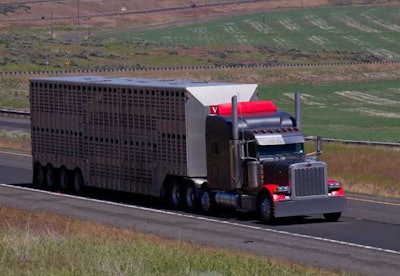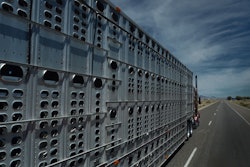
A bill filed last week in the Senate would overhaul hours of service regulations for livestock and insect haulers. Chief among the changes would be the expansion of livestock/insect haulers’ available drive time, potentially allowing them to drive up to 18 hours in a 24-hour period if operating within a 300-air-mile radius of the start of their on-duty period.
The bill, sponsored by Nebraska’s Ben Sasse (R) and dubbed the Transporting Livestock Across America Safely Act, comes as regulators and lawmakers have grappled in recent months with how to handle the hours needs of livestock haulers after implementation of the electronic logging device mandate. Livestockers have already received an exemption from the ELD mandate through the end of September, and could receive one through the end of September 2019, should a bill cleared by the House become law.
However, Sasse’s bill would upend the underlying hours of service regulations for livestock and insect haulers, potentially offering them needed flexibility while further complicating how such haulers could come into compliance with the ELD mandate. It calls for FMCSA to boost the available drive time for livestock/insect haulers operating within the 300-air-mile radius of their on-duty origin to at least 15 hours, but potentially up to 18 hours. Once completing their on-duty day, drivers must then take a break of five hours less than their drive-time maximum, so between 10 and 13 hours.

In addition to adding up to seven hours of drive time for truckers hauling livestock and insects within the 300-air-mile radius, the bill would also allow drivers to deduct certain breaks from their on-duty time and exempt them from the 10-hour rest break requirement of the current HOS rule.
If a livestock hauler is operating within a 300-air-mile radius of the start of their on-duty period, they can exclude certain hours-draining hurdles, such as time spent at a carrier or shipper facility or “any public property during which the driver is waiting to be dispatched,” and time spent loading and unloading, supervising loading or unloading or attending their vehicle while it’s being loaded or unloaded.
They can also take rest periods that do not count against their drive time.
Sasse’s bill was introduced May 23. To become law, it must pass both chambers of Congress and be signed by the president.
**
Codifying the change announced last week to allow drivers to use personal conveyance status while laden, likewise to find a safe parking location moving from a shipper or receiver and in some other instances, the Federal Motor Carrier Safety Administration is slated to publish the changes in the Federal Register on Thursday.
As detailed in-depth by Overdrive Senior Editor Todd Dills here, the agency’s decision permits “movement form a shipper or receiver to the nearest safe resting area” via personal conveyance mode, “regardless of whether the driver exhausted his or her hours of service.”
The changes come two months after hard enforcement of the agency’s electronic logging device mandate began, offering guidance to help drivers manage unforeseen situations on the road with fewer questions about compliance. By some interpretations, it’sa sliver of hours flexibility under the ELD mandate.
The agency is also slated to publish Thursday fresh guidance for agriculture haulers’ hours of service exemption, which allow truckers hauling ag commodities to operate without the need to record duty status (via an ELD or paper log) if they operate within a 150-air-mile radius of the source of the load. The new guidance also allows drivers to be fully exempt from hours of service regs if they operate within the 150-air-mile exemption, needing only to begin recording hours once they leave that radius. Read more on the ag hours exemption at this link.













